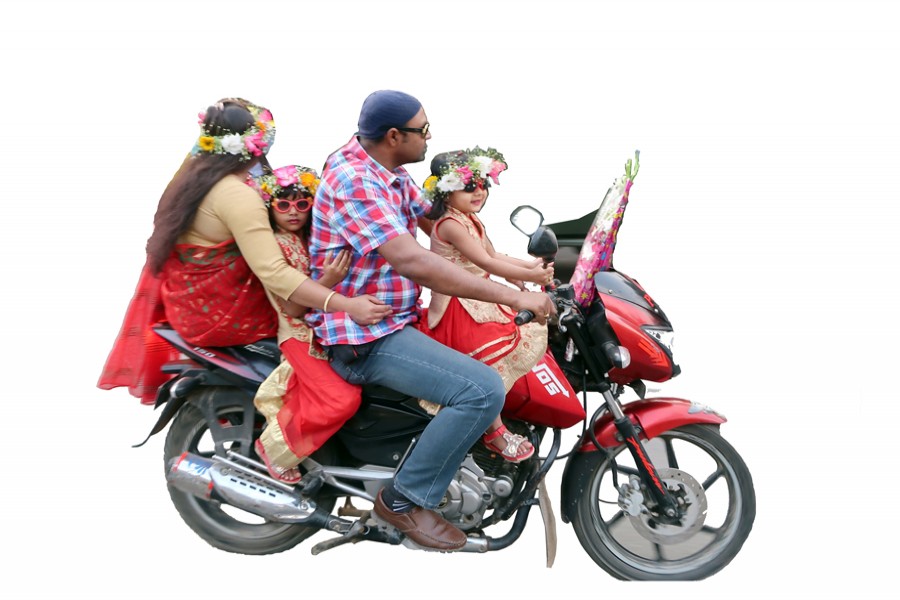
Published :
Updated :

What a time! Two consecutive days' celebration of colour. First the yellow heralds the month of Falgun, the onset of the season of Spring in this part of the world. The next day is Valentine's Day -- an occasion dedicated to love. If Spring symbolises life -- the advent of life in all its regal abundances, love also is the ultimate bond people aspire for. That colours run riot is a legacy from Nature. Indeed, Nature shapes the moods of the living species -- only more so for the human kind.
What's the colour of life? Is it green or yellow? What's the colour of love? Is it red only? Both life and love are the ultimate truth in life. Colours only paint what the mind feels. It is an attempt to bring to life what dreams are made of. Dreams -- mellifluous to majestic -- float like clouds and most of them disappear without leaving a lasting presence. But some are so vivid and colourful that they stay for long. It is the mind that gets coloured in the rainbow vision of an arc. Where life's longing and beauty coalesce, something extraordinary germinates. When an entire people can paint such a common picture in their minds' eye, it is the essence, the exquisiteness of beauty that gets created.
On Pahela Falgun or Pahela Baishak such an epic event takes place in the life of the Bangalees. But it must be admitted that Pahela Falgun is gender-biased. Adorned with garlands and headbands of flowers, it is the girls and women who take literally to their wings. Boys and men nurse their moroseness. At least boys and youths can think of a better get-up on the occasion to join the party. This is necessary in order to free the mind from many of the inhibitions people in their young age in this part of the world suffer from.
Celebration of colour on the inaugural day of the Spring is a unique expression of cultural belongingness. It could be even more exquisite if the gender barrier could be broken. Great people have thus coloured life all over the world with their own way of cultural mores. The Bangalees have chosen it as a most powerful statement of their love for aestheticism. Everywhere Nature has lent them the idea of celebrating colour and beauty. Lilac, Tulip, Cherry blossoms are all colours so are Palash, Shimul and Krishna Chura. Even the mustard flower spread as far as eye can see present a picture of a world of its own. People learn from Nature to be colourful within and without. Thank God, in the traditional celebration of Bangaleeness colour has not crossed the limit of civility and sensuousness.
Of course, the Hindus in most parts of India, Nepal and Bangladesh have religious celebration of colour called "Dol Utsab' or 'Dol Jatra'or 'Dol Purnima'. This is an ancient festival that also celebrates colours in Spring time. Loved ones are smeared with colour dusts or sprinkled with liquid colours all over. Non-Hindus have also borrowed this festival in order to make life colourful at least for a day.
Juxtaposed in between the Pahela Falgun and 'Dol Purnima', the Valentine's Day brings some air of Westernisation. But it is fast sitting pretty comfortably with the Bangalee psyche. There is no harm in expressing love -one that is genuine, pure and tested. There are sexual aberrations in this society. If the spirit of true love is cultivated here, this can indeed be a strong deterrent to those aberrations. Let the endeavour be healthy, dignified and respectful. There lies the strength of social and human bonds.


 For all latest news, follow The Financial Express Google News channel.
For all latest news, follow The Financial Express Google News channel.